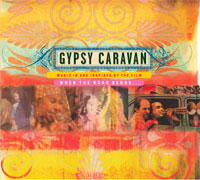 |
|
 
|
 |
|
LINER NOTES You cannot walk straight When the Road Bends... - Romani proverb 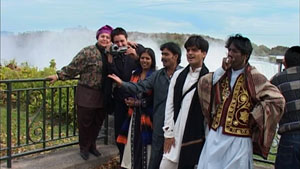 We were showing our passports at the USA/Canadian border - me and about 35 musicians from all round the world. After many weeks on the road performing concerts across North America, everyone was tired but excited to be flying back to New York where they would catch their connecting planes to home and family. Then there was a bit of commotion... it turned out that someone had put the wrong kind of transfer visas in the Romanian passports of 11 Taraf de Haïdouks band members. One by one, they were "escorted" back into a detention room behind thick glass and guarded by rather severe looking border patrol agents. Not a place I recommend hanging out for fun. Soon, despite language barriers, Taraf got wind that there was a suspicion about whether they were genuinely professional musicians on tour. Septuagenarian Nicolae Neacsu was in an airport wheel chair with his violin case on his lap, he took out the instrument and started plucking. Ionica joined in on the small cymbalom, Caliu with his violin, Pasalan's powerful voice... suddenly the border guards couldn't help but crack a smile - they had a full scale professional concert going on in their holding room. OK, it's not the most conventional way of proving one's career, but it didn't hurt. The guards only made a half-hearted effort to stop the thrilling music, and within a few hours everyone was allowed onto a flight.
We were showing our passports at the USA/Canadian border - me and about 35 musicians from all round the world. After many weeks on the road performing concerts across North America, everyone was tired but excited to be flying back to New York where they would catch their connecting planes to home and family. Then there was a bit of commotion... it turned out that someone had put the wrong kind of transfer visas in the Romanian passports of 11 Taraf de Haïdouks band members. One by one, they were "escorted" back into a detention room behind thick glass and guarded by rather severe looking border patrol agents. Not a place I recommend hanging out for fun. Soon, despite language barriers, Taraf got wind that there was a suspicion about whether they were genuinely professional musicians on tour. Septuagenarian Nicolae Neacsu was in an airport wheel chair with his violin case on his lap, he took out the instrument and started plucking. Ionica joined in on the small cymbalom, Caliu with his violin, Pasalan's powerful voice... suddenly the border guards couldn't help but crack a smile - they had a full scale professional concert going on in their holding room. OK, it's not the most conventional way of proving one's career, but it didn't hurt. The guards only made a half-hearted effort to stop the thrilling music, and within a few hours everyone was allowed onto a flight.
To begin making this film, I spent about six weeks on tour buses and planes across America. It would have been wonderful to bring you some of the spontaneous melodies that transpired when these musicians were bored on long bus journeys. And I wish I could convey the energy from a hotel room at 3am when everyone was tired so they just swapped instruments and began creating music on foreign strings and wood that they'd never played before. But of course there's bus noise in those recordings, or the hotel manager came to quiet things down before I had my recording equipment ready. And I had no idea yet about the interesting sounds awaiting us in India, Spain, Macedonia and Romania at home with the artists and their families. In fact, our main problem with this soundtrack was an embarrassment of riches. We have about 40 or 50 hours of music. I could make a whole album just from late nights in the Rajasthan desert with elders playing and the Maharaja musicians joining in, and learning. Most of the musicians on tour grow up with music from childhood, "like water, like air, like bread," as Esma says. The kids start playing as early as they can remember. And the adults play for a living - and to keep on living. 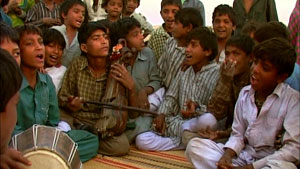 During a couple of weeks in each country, I heard music at weddings and funerals, early in the morning, late at night and while chopping vegetables for lunchtime - violins, synthesizers, an a cappella lament, trumpets, a drum. Since it is often the most prized musicians who go on tour, their time at home is also precious. It's the time when they learn from their elders and it's the time when they teach the next generation. In every country I visited, I heard the musicians talk of setting up a school to teach their skills to the children - they know that their musicianship no longer replaces reading and writing, but they also recognize that their skills are a valuable treasure that must be preserved.
During a couple of weeks in each country, I heard music at weddings and funerals, early in the morning, late at night and while chopping vegetables for lunchtime - violins, synthesizers, an a cappella lament, trumpets, a drum. Since it is often the most prized musicians who go on tour, their time at home is also precious. It's the time when they learn from their elders and it's the time when they teach the next generation. In every country I visited, I heard the musicians talk of setting up a school to teach their skills to the children - they know that their musicianship no longer replaces reading and writing, but they also recognize that their skills are a valuable treasure that must be preserved.
In the film, we listen in on a group of men debating the merits of modern education. These are Langa musicians in a tiny village of about 30 huts in the Rajasthani desert. This whole village descends from a long line of storytellers and musicians. For centuries the surrounding communities have relied on them to entertain at every occasion. Yet when I arrived in Barnawar village, the most striking sound was the silence. Just sand and silence. Occasionally a camel fetching water from the well, or a few minutes of the muslim call to prayer from the mosque, or cockerels (not just in the early morning). But mainly silence. It made the music more haunting and magical when it came. The members of Maharaja actually come from a mixture of backgrounds, which is unusual within India. Performing together defies traditional religion and caste barriers. Dancers, poets and highly skilled musicians, they are Hindus and Muslims from the Manganyar, Langa and Sapera (snake charmer) castes. Their diverse repertoire blends Arabic, Sufi trance, and energetic hybrid styles with the folk music of Rajasthan ("land of kings"). And the Maharaja musicians also helped in the blend of the other bands on tour - Harish, Gewar and Shayar were often the ones to crack a joke in the right time and place to keep everyone's spirits high until we reached the next pit stop. Indian music was important to this tour because India is the origin of the Romani people. Most scholars today agree that all the people around the world who we call "Gypsies" probably hailed from Northern India a thousand years ago. Due to a mistaken belief that they were from Egypt, they became known as 'gyptians or "Gypsies" ("Gitans" in French, "Gitanos" in Spanish). But these people share a common language which comes from Sanskrit, and in this Romani language, the word "Rom" means man or person. So insiders call each other "Rom" or "Roma", which implies more respect than the term "Gypsy."  When World Music Institute pulled together the Gypsy Caravan tour, it was the biggest thing they'd ever organized. More than 30 musicians on the road for weeks speaking nine languages (nobody on the tour bus could speak to everyone else aboard; it required a lot of sign language and intermediaries and guessing and good will). We lived a lot of organized chaos. And part of the tour's goal was to show the diversity of the Romani people by bringing together these different groups.
When World Music Institute pulled together the Gypsy Caravan tour, it was the biggest thing they'd ever organized. More than 30 musicians on the road for weeks speaking nine languages (nobody on the tour bus could speak to everyone else aboard; it required a lot of sign language and intermediaries and guessing and good will). We lived a lot of organized chaos. And part of the tour's goal was to show the diversity of the Romani people by bringing together these different groups.
It's interesting to me that after such a long tour, several of the bands came back to New York for their own concerts. I invited them to my editing room to see themselves on camera, but they always ended up being most fascinated to see images of the other bands in their homes. Of course, we had all shared the same life on tour for weeks, but they had never seen each others' starkly contrasting hometowns and villages. Fanfare Ciocarlia is an eleven-man Romanian brass band. I filmed them in their village near the Romanian-Moldavian border where there are three trains a day and herds of honking geese. Fanfare's crazily fast music combines Romanian, Gypsy and Turkish traditions, elements of klezmer, and a flamboyant sense of fun - sometimes even incorporating adaptations from Bollywood to Hollywood. They've now made four successful CDs and played on hundreds of European stages. The proceeds of their success helped bring their village electricity, a new road and a new church. This tour was their first time in the USA. They were nervous when they arrived because it was just a few weeks after September 11th 2001 and they worried that their dark skin would be a problem. In fact, they were right at one point - in Miami there was a problem boarding a plane because another passenger didn't want to travel with all these dark foreigners. But the Fanfare music was a big success and they were instantly invited back again for solo concerts. 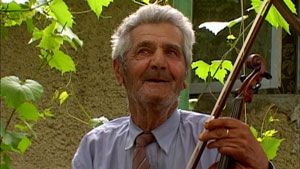 Taraf de Haïdouks is probably one of the most famous Gypsy groups today. A dozen vibrant musicians who range from their 20s to their 70s, Taraf come from the south Romanian village of Clejani (the band's modest income buoys the whole village's economy). Their performances fill the biggest concert halls from New York to Tokyo and elicit glowing media praise. They toss back and forth wedding music, violin ballads, jazz, classical and pop riffs. Their latest album has an ironic premise; it is Gypsy reinterpretations of famous classical tunes that were originally lifted from (or inspired by) traditional Gypsy melodies. Sadly, our last filming with them was the musical funeral of their founding violin maestro, Nicolae Neacsu.
Taraf de Haïdouks is probably one of the most famous Gypsy groups today. A dozen vibrant musicians who range from their 20s to their 70s, Taraf come from the south Romanian village of Clejani (the band's modest income buoys the whole village's economy). Their performances fill the biggest concert halls from New York to Tokyo and elicit glowing media praise. They toss back and forth wedding music, violin ballads, jazz, classical and pop riffs. Their latest album has an ironic premise; it is Gypsy reinterpretations of famous classical tunes that were originally lifted from (or inspired by) traditional Gypsy melodies. Sadly, our last filming with them was the musical funeral of their founding violin maestro, Nicolae Neacsu.
Esma Redzepova from Skopje, Macedonia, has sung for more than 40 years and won global renown as musical "Queen of the Gypsies." She is widely respected for advancing Romani rights, and was even nominated for a Nobel Peace Prize by Romani humanitarian organizations. With her late husband, Esma could not have children so they earned money to raise other kids and started a music school. This impassioned diva and her band play some 150 concerts around the world each year. Backstage and on tour, she is a seminal professional and naturally commands the respect of all her Romani peers. Although I knew Esma's career had started young, it wasn't until my last night in Macedonia that I stumbled on the priceless footage of Esma as a teenager in the sixties singing Romano Horo. The other grande dame of this tour was Juana la del Pipa. Her deep raspy voice gives me chills. It is almost masculine (such that tour manager George Cruze joked one would have to smoke a carton of cigarettes a day to sound like her). Yet Juana was the feminine glue of the tour, nicknamed "Mama" by the Indians. At home in southern Spain, Juana regularly goes to her church where the congregation pray to flamenco rhythms, and she has a husband and 7 children whom she loves dearly - but she took me aside and told me not to have more than three kids because it's too much work! Antonio El Pipa Flamenco Company is one of Spain's most traditional flamenco groups. Born in Jerez de la Frontera, Andalucia, Antonio el Pipa hails from a revered dynasty of Gitano artists, including his legendary late grandmother, and today he choreographs huge shows that are critically acclaimed in Europe, America and Japan.. His group, his life and his dance appear to be more formalized than anyone else on tour - one of my favourite shots in the film is of Antonio in a pink shirt with his daugher in a pink dress on a pink bed in a pink bedroom mimicking her father's dancing. 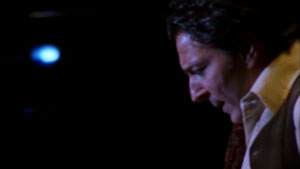 Antonio's pink bedroom is a far cry from the homes of Maharaja musicians in the desert. But of course it makes no difference. These guys were lucky to meet each other on the road, because they played good music together and the musicians formed a deep friendship bond that seems like it'll last a lifetime.
Antonio's pink bedroom is a far cry from the homes of Maharaja musicians in the desert. But of course it makes no difference. These guys were lucky to meet each other on the road, because they played good music together and the musicians formed a deep friendship bond that seems like it'll last a lifetime.
So, after five years of recording and editing, I'd love to take credit for the music on this album, but I was just lucky enough to be there. And in some cases, the same is even true for the band managers and perhaps the musicians themselves. I witnessed more than once a smile as big as the sun, when a musician or manager heard something for the first time - lucky enough to be there and to be part of the organism that gives this music life in the world. Even on stage, nothing was predictable. Antonio el Pipa's aunt Juana says that she never knows what she will perform, she just knows the rhythm of a particular song and she goes on stage in a kind of trance and sings and dances whatever feels right. Often she sang of God or love, but at one concert in New York she lamented how tiring it was to go shoe-shopping in the big city. During another show, all the Romanians in the audience started laughing. It turned out that Taraf's Pashalan and Costica were improvising the words of their well loved duet - normally the tale of a philandering husband, tonight the lyrics changed to Costica chiding his chubby companion for not hitting his notes because he couldn't resist eating a whole chicken before the show: wouldn't half a chicken have been enough, like it was for the rest of us? And this brings us to the more serious notes. Not everything on tour was about fun or music. Some of it was about being Romani, or being seen as a "Gypsy." Antonio el Pipa rarely talked about his ethnic identity, but he told me one day: "I don't like it when someone puts all of us in one category: a Gypsy always has a guitar and a polka dot dress and sings and dances, begging for a living and traveling… There are plenty of Gypsies who don't know how to sing or dance and don't even like flamenco, and that's fine. We're just normal people with our idiosyncracies and our way of feeling and loving. …I get angry when people say things about us that aren't true."  Negative images of Gypsies abound. The most obvious instance in my film is the day when a Californian hotel clerk writes about being scared, " Jeezuz Lord save me from the Gypsies." But this is only the tip of a worldwide iceberg. In Romania, several musicians justified to me that it was normal for a Bucharest hamburger restaurant not to want to employ Gypsies because nobody trusts them. Human Rights organisations are often campaigning against forced sterilization of Romani woman (a particular problem in the Czech Republic), and fighting for equal schooling so that Gypsy kids don't continue to be automatically sent to the back of the class or transferred to special schools for the learning disabled. Romanian newspapers can still carry advertisements for apartments that are for rent - but not to Gypsies. And there are ads for prostitutes wanting new clients - but not Gypsies. Yet when it comes to time for military service, then the Gypsies are accepted. At least three of the artists on this concert tour had served in the military at home in Europe.
Negative images of Gypsies abound. The most obvious instance in my film is the day when a Californian hotel clerk writes about being scared, " Jeezuz Lord save me from the Gypsies." But this is only the tip of a worldwide iceberg. In Romania, several musicians justified to me that it was normal for a Bucharest hamburger restaurant not to want to employ Gypsies because nobody trusts them. Human Rights organisations are often campaigning against forced sterilization of Romani woman (a particular problem in the Czech Republic), and fighting for equal schooling so that Gypsy kids don't continue to be automatically sent to the back of the class or transferred to special schools for the learning disabled. Romanian newspapers can still carry advertisements for apartments that are for rent - but not to Gypsies. And there are ads for prostitutes wanting new clients - but not Gypsies. Yet when it comes to time for military service, then the Gypsies are accepted. At least three of the artists on this concert tour had served in the military at home in Europe.
To state the obvious: this is not fair. I dedicated my film to "Decade of Roma" because I support the effort to recognize and confront issues facing Rom in Europe. Racism will not disappear overnight, but it is even harder to overcome racism or stigma when so many Roma are suffering from lack of access to education or employment or housing. If we continue to put healthy children in schools for the learning disabled, we cannot hope to improve the world for anyone because we are cheating the human race. So I'm heartened that today there are countless Romani NGO's and scholars and activists fighting against the racism and creating positive role models - as well as creating Romani scholarships and information websites and teen chat sites and dictionaries. But even far away in the USA, schooling can be difficult for Roma. Negative stereotypes run deep. I've heard dozens of Romani American parents tell their kids not to admit to being "Gypsy" at school because they'll get kicked out of class. An exception was George Eli (the Romani man who recorded sound in my film and is now making his own film). George has two sons who he hoped wouldn't mind telling their school that they were "Gypsy." But his younger boy told him it would be crazy - the teacher and other kids would assume that he was a pickpocket or that he was evil like the Gypsy in the film of Nôtre Dame. 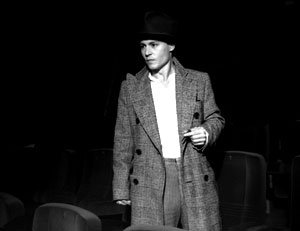 When I went to interview Johnny Depp, I carried a short letter from George about his sons and their inability to be proud of being Gypsy. George wanted an autograph for them from one of the few Hollywood stars who seems to know about the Romani people and support them, without playing into the clichéd stereotypes of a Gypsy.
When I went to interview Johnny Depp, I carried a short letter from George about his sons and their inability to be proud of being Gypsy. George wanted an autograph for them from one of the few Hollywood stars who seems to know about the Romani people and support them, without playing into the clichéd stereotypes of a Gypsy.
Johnny Depp was moved by the request and chose to not just sign a photo, but to write back to the young American Romani boys. His letter needs no explanation. I asked for permission to reprint it here because it is a touching inspiration which may help people beyond George's sons: -- 21.X.04 DEAR ALEX AND CHRISTOPHER, I HAVE RECENTLY BEEN IN CONTACT WITH A YOUNG FILMMAKER, NAMED JASMINE DELLAL, WHO IS WORKING ON WHAT PROMISES TO BE AN EXTRAORDINARY FILM, CALLED "CARAVAN". THE FILM'S SUBJECT IS ROMANY MUSIC AND CULTURE-WHICH IS A FASCINATING ETHOS. SHE INTERVIEWED ME FOR THE FILM, MAINLY BECAUSE ABOUT SIX YEARS AGO I HAD THE HONOUR OF WORKING WITH AN AMAZING GROUP OF MUSICIANS FROM ROMANIA, "THE TARAF DE HAIDOUKS". WE DID A FILM TOGETHER CALLED " THE MAN WHO CRIED" IN WHICH I PORTRAYED A ROM/GYPSY-THE TARAF PLAYED MY FAMILY. WHILE WORKING ON THE FILM TOGETHER WE DEVELOPED A VERY CLOSE RELATIONSHIP AND BECAME GREAT FRIENDS. WE ARE STILL VERY CLOSE TO THIS DAY--- EVEN IF WE'RE NOT ABLE TO SEE ONE ANOTHER ALL THE TIME. THIS INCREDIBLE GROUP OF MEN SHARED WITH ME SOME OF THEIR MOST BEAUTIFUL AND POIGNANT MEMORIES OF GROWING UP ROM, OF GROWING UP GYPSY, AND THOUGH I KNOW THAT IT WAS NOT ALWAYS EASY FOR SOME OF THEM, AS THE RACISM AND THE VICIOUS, IGNORANT BLIND PERSECUTION OF THESE AMAZING PEOPLES WAS, AND STILL IS, PROMINENT THROUGHOUT THE WORLD, THEIR ABILITY AND STRENGTH TO SMILE THROUGH IT AND CONTINUE THEIR MARCH FORWARD WITH GREAT PRIDE AND DIGNITY IS A LESSON AND A GIFT FROM THEM TO ME THAT I WILL CHERISH ALWAYS AND FOREVER. IN FACT, ONE OF THE PROUDEST MOMENTS OF MY LIFE WAS WHEN THEY HAD DECIDED BETWEEN THEMSELVES THAT I WAS NOT JUST A GADJO ACTOR, OR JUST ANOTHER GADJO PERSON WHO WOULD USE THEM UNTIL I WAS FINISHED WITH THEM AND MOVE ON-NO, THEY HAD DECIDED TO HONOUR ME WITH THE TITLE OF "PRAHL", BROTHER. THAT MOMENT OF ACCEPTANCE INTO THEIR WORLD, THEIR HEARTS, WAS A DEFINING MOMENT FOR SOMEONE LIKE ME WHO HAS, IN MANY WAYS, SPENT THE MAJORITY OF HIS LIFE NOT WANTING "ACCEPTANCE" INTO THE POPULAR CLIQUES, OR GROUPS-THAT WELCOMING INTO THE WORLD AND FAMILY OF THE TARAFS MEANT, AND STILL MEANS, EVERYTHING TO ME. YOUR FATHER SENT ME A VERY NICE LETTER TO THANK ME FOR MY INVOLVEMENT IN "CARAVAN". HE MENTIONED THAT MAYBE MY PARTICIPATION COULD BE HELPFUL FOR SOME ROMA PEOPLE, WHO ARE, IN CERTAIN SITUATIONS, ASHAMED OF THEIR HERITAGE. I AM NOT SURE THAT ANYTHING THAT I HAVE TO SAY ABOUT ANYTHING CAN HELP ANYONE-BUT I CERTAINLY HOPE SO. IF I CAN HELP EVEN ONE OR TWO PEOPLE-GREAT!!! WE SHOULD ALL BE PROUD OF WHO WE ARE, WHERE WE COME FROM AND WHAT WE CAN MAKE OF OURSELVES. IN CLOSING, I GUESS WHAT I'M SAYING IS JUST THAT. BE PROUD OF YOUR BLOOD, YOUR HERITAGE. BE PROUD AND BE STRONG-YOU, YOUR FAMILY AND YOUR FUTURE ARE WORTH IT!!! I HOPE THIS LETTER FINDS YOU BOTH HAPPY, HEALTHY AND STRONG. ALL MY BEST AND MUCH RESPECT- JOHNNY DEPP --- Talking of respect… Sometimes when you show a film or play live music, there is a great atmosphere in the room and people really seem to "get it" - it's fun and it's so much more than that. One of my favourite moments from showing this film was in France when a couple came up to me afterwards and thanked the film for introducing them to people who they needed to meet and needed to love, even though they hadn't known it. Then the next day a couple of women passed by me in the street and raised their fists in the air: "Vivent les Tziganes!" So, we will continue creating educational tools for audiences to find out more and to become engaged, if they wish, in the international effort to challenge centuries of discrimination against Gypsies - a form of racism which seems to exist almost always, except when it's a question of making good music. And if you want to find out a little more, then please just read what you can about real Romani people, or check out some of these websites: www.RomaDecade.org , www.rroma.org , www.errc.org , www.americangypsy.com/links , www.GypsyCaravanMovie.com/links And meanwhile all the bands on this CD will keep inspiring us with their music. Fanfare Ciocarlia have recorded a new album with other Romani artists including Esma Redzepova. It'll be my great honour to hear them playing live before screenings of my film a few times in the next month. I hope you get the chance to hear some of these musicians live one day. Meanwhile, I've been told in almost every Romani community about how there are two kinds of music: party songs (for dancing) and Table songs (for crying). I hope you feel your fair share of both on this album and the many other Gypsy CD's out there. Jasmine Dellal, New York, April 2007 CREW CREDITS & THANKS: Brian Cullman - Soundtrack Producer Jasmine Dellal - Producer, Clearances Dan Bora - Music Production, Mixing, Fire Escape Marie-Laurence "Skye" Durand - Producing Assistant Kenneth Higney - Knight in Shining Music Clearance Armour Greg Cohen - Development Producer Mary Myers - Music Therapist World Music Institute - Gypsy Caravan concert tour producer John Gurrin - Concert Recordings, Transfers & Can-Do Spirit Mark Berger - Transfer Expertise Steve Byram - Design Mastering by UE Nastasi at Sterling Sound, NY Mixing by Dan Bora at Looking Glass Studios, NY When you work on a film and a soundtrack for over five years, a lot of people end up helping. Maybe some of these people just took pity on a lady who was fanatically trying to bring a certain story to the world. And some of them care deeply for this music and the people who make it - and the communities that they come from. "Thanks" can't always be enough - so much of this help has been in the form of collaboration, inspiration and random acts of generosity. We toast you all, even those whose names have escaped this list, you know who you are. Naïs Tumenge: Marc Allen, Kiki Allgeier, Andrew Becker, Scott Billington, David Bither, Adam Block, Joe Boyd, Matthew Burton, Hector Castillo, Christina Clarke, David D'Arcy, Aldo Davalos, Joel Davis, Orhan Demirovski, MaryEllen DeVaux, Alain de Halleux (catching Paganini), Paul Heck (early bird inspiration & expertise), Marc Hollander, Elvis Huna, Eugene Hutz (Mishto nearly here), Israel Iglesias, Tom James, Houston King (handshakes), Robert Kraft, Jim Leavitt, Gregory Morris (great photos), Albert Maysles, Sher Mohammed, Helmut Neumann, Albert Nijmolen, Andrew Raible, Kjehl Rasmussen, Esma Redzepova, Jerôme Reese, Arne Reinhardt, James Velaise, Barry Wolifson |
|||||||||||||||||||||||||||||||||||||||||||||||||||



